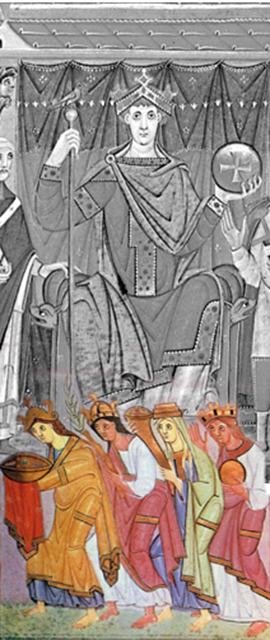Sicut oves in medio luporum
religious landscapes, dualist dissent, and the „language of heresy“ (11th-13th centuries)
The project focuses on the study the texts of the medieval religious dissenting culture(s), encompassing the Medieval Balkans, Latin West, and Byzantine East, in the period between the 11th and 13th centuries. Hence, selected texts, related mostly to the Bogomils and to the Cathars, and written in Latin, Greek and Old Church Slavonic, are submitted to comparative literary analysis in respect to local specificities and historical backgrounds, as well as within the contexts in which they originated. Additionally, the accent is also put upon the transfer-zones and trajectories of the circulation of texts (together with their reception and interpretation), people, knowledge, and ideas, bringing forth the question of the process of religious (ex)change and interaction between East and West, via the Balkans. The original source material of both the adherents to these dissenting groups, as well as their opponents is taken into consideration. The important approach of this project is to examine the question of medieval dualism through the perspective of language, textual patterns, rhetoric, metaphors, narratives, in relation to the local set of circumstances. Namely, it is important to place and examine the literary patterns of the studied texts in a literary-historical perspective, and to deduce from where these models originated and poured in, as well as how they were developed further. This will be achieved through the research of the appropriation and interpretation of Biblical and non-Biblical material, used by the Bogomils and the Cathars, and the specific ways in which they referred to these literary sources. While “medieval dualist heresies” represent a heavily researched field overall, there are nevertheless gaps remaining: this study proposes to address one of these gaps with a literary-historical analysis and it offers to delve more deeply into questions relevant to the language use, literary aspects and semantic fields of religious dissent, as conveyed by the source material. The research conducted in this manner will provide some fresh insights into these vividly debated research problems, and will thus have important implications for the study of the perception of the interfaces between eastern and western dualists, thus opening way to the elucidation of the questions related to religious continuity and change.
The first two years of the project (2020-2022) took place within the Group of Textual, Historical and Systematic Studies of Judaism and Christianity, at the Faculty of Philosophy, Theology, and Religious Studies of the Radboud University of Nijmegen. The international conference which will be organized in the third year of the project (2022-2023) at the Institut für Mittelalterforschung in Vienna will provide an interdisciplinary and international platform for scholars coming from different research cultures. Thus, due to the necessity for assembling of the research results obtained in the East, as well as in Western Europe (and beyond), the scholars from East and West shall be brought together, which would yield more ample results and facilitate the scholarly exchange.
Some of the aspects of the literary analysis will include: semantic fields analysis, stylistic analysis, scrutiny of topology/themes/imagery (recurrence to wisdom literature and scriptural passages), parascriptural narratives, appropriation of pseudepigraphical material, elements of etiological, cosmological, eschatological and biblical history traditions, adaptations and modifications of biblical narratives; patterns of intertextual relations, rhetoric strategies, symbolic representations and metaphors, formulaic phraseology, and allegorical exegesis of the Scriptures. The above structured scheme of linguistic analysis will yield a fresh perspective on the specific nature of the “heresies” in question, and also, on the (inter)woven textual threads in the fabric of the very “language of heresy”, by prioritizing the theme-based approach, with connected sub-topics, integrated within a theme. Besides, the wider scope of scrutinized texts (including ritual, apocrypha as well as hagiography) will offer a fresh insight into the conceptual, textual and topologic bridges linking dualist communities.
The complex research field as that of medieval heresies cannot be tackled thoroughly by means of a single-disciplinary focus; consequently, this work tends to study the problems related to the fields of language, history, theology, and church history, in a transdisciplinary manner. The innovative value of this project is explicit in the cross-section of Latin, Byzantine Greek, and Old Church Slavonic sources, which is furthered by placing them within a comparative perspective and in their respective historical contexts, with a widely branched set of research sub-questions. Therefore, the aim of this project is to observe medieval dualism through the lens of language and the spectrum of linguistic means, as well as in relation to the contexts, transfer-zones, and trajectories of their spread, and to examine if, and to what extent, language might serve as a conceptual bridge between old and new textual treatments of religious dissent, between regional “heterodoxies” and “heresies”, East and West, and how the text/language potentially bridges the given differences. The development of new trajectories through this research will thus include the analysis of the “language of religious dissent”, and the historiographic research of the given situational contexts.
Erwin Schrödinger-Stipendium (FWF)
Rückkehrphase
01.09.2022-31.08.2023
Project leader
Dr. Bojana Radovanović
Kontakt
bojana.radovanovic(at)oeaw.ac.at

